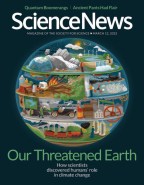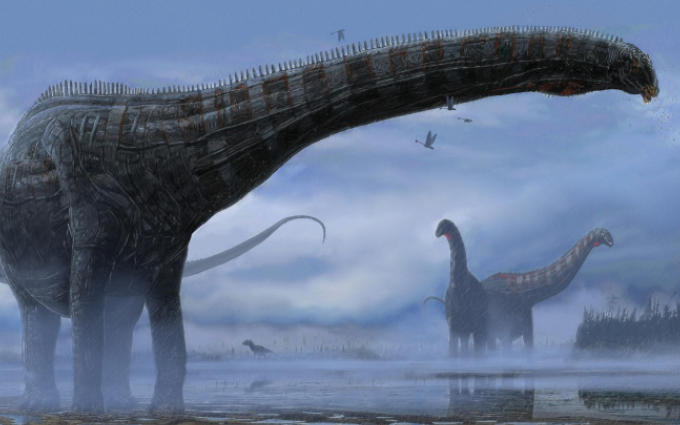Readers discuss hot Jupiters, Earth’s inner core oddities and more
- More than 2 years ago

Turning tides
Gravitational interactions with nearby planets and stars can hurl giant exoplanets into orbits that bring them close to their suns, Ken Croswell reported in “Hot Jupiters may be kicked into place” (SN: 3/12/22, p. 13).
Croswell wrote that a hot Jupiter gets put on a highly elliptical and inclined orbit that brings the planet close to its star. Over time, the star’s gravity makes the planet’s orbit smaller and rounder. Some readers wondered if atmospheric friction, not gravity, plays the main role in the orbit’s transformation.
“Friction isn’t what causes a close-in planet’s orbit to change,” Croswell says. Instead, gravity between the star and planet raises strong tides — similar to those formed from the gravitational interactions between Earth and its moon. It is those tides that rob the world of orbital energy, gradually shrinking and rounding the orbit, he says. “This process goes by various names, such as ‘tidal circularization’ and ‘tidal damping.’ ”
It’s shear science
Computer simulations suggest that weird “superionic” matter, which behaves like a mash-up of solid and liquid, could explain the oddities of Earth’s center, Emily Conover reported in “Earth’s inner core may be ‘superionic’ ” (SN: 3/12/22, p. 12).
One simulation showed that a superionic inner core slows shear waves, seismic waves that jiggle the Earth perpendicular to their direction of travel, Conover wrote. The phenomenon may explain the unexpectedly low shear wave velocities previously measured in the inner core. Reader Jeff Fisher asked how shear waves could occur in the inner core when such waves aren’t able to pass through liquids like Earth’s outer core.
It’s true that shear waves, also known as secondary or S waves, cannot travel through the liquid outer core, Conover says. But primary waves, or P waves, which compress and expand the Earth in a direction parallel to their travel, can. “When a P wave goes through the outer core and meets the inner core, it can create an S wave that will travel through the inner core,” Conover says. “When that S wave meets the outer core again, it will create a P wave that will travel through the outer core and onward. Scientists can measure that P wave and draw conclusions about the S wave that traveled through the inner core.”
Dino in the dumps
Fossilized lesions in the vertebrae of a 150-million-year-old juvenile sauropod (illustrated) may record the oldest known respiratory infection in a dinosaur, Sid Perkins reported in “Fossils reveal a case of the dino sniffles” (SN: 3/12/22, p. 10). The story inspired a chorus of puns on Twitter, including one by user @agent_outside: “Some ‘Jurassick’ facts for you…”

A century of climate
The last century and a half of climate science has strengthened our understanding of the roots and impacts of human-caused climate change, Alexandra Witze reported in “A planetary crisis” (SN: 3/12/22, p. 16).
Reader Connie Hellyer lauded Witze’s coverage as “masterful in its scope and clarity.” The article “should be required reading for policy makers, voters and all confused by the shards of sometimes conflicting and out-of-context factoids coming from every direction.”
Update
“A high-profile transplant milestone” described the first transplant of a genetically modified pig heart into a human (SN: 3/12/22, p. 26). David Bennett, the 57-year-old man who received the organ, died on March 8, two months after the surgery.
Correction
In “James Webb telescope gets in position” (SN: 2/26/22, p. 10), the definition of L2 wasn’t quite right. L2, the telescope’s home, is a relatively stable region where the sun’s and Earth’s gravity combine to provide the centripetal force needed to keep a smaller object on a curved path.